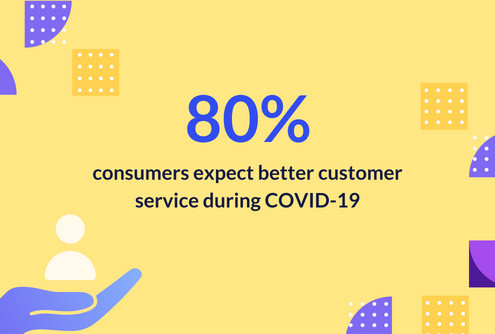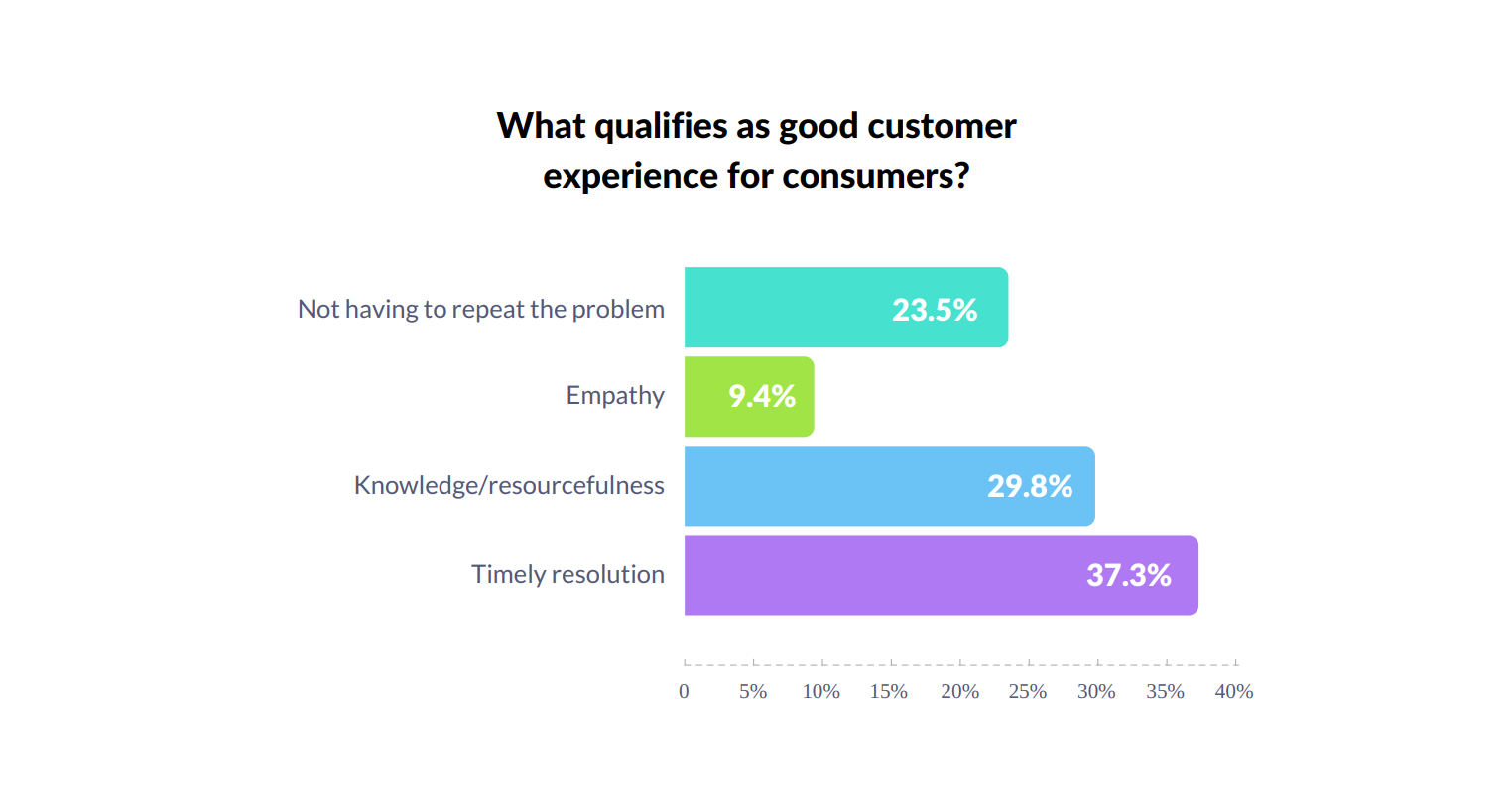
Winning over the trust and loyalty of the modern-day customer is becoming increasingly challenging. Customers today are not only spoilt for choice, but have extremely high expectations from companies.
Consider this: According to a study by Accenture, 87% of organizations agree traditional experiences no longer satisfy customers.
If that’s the case, what do customers actually want? What are their expectations on the kind of customer support they receive from brands?
To better understand present-day customer behaviour amidst the pandemic, Hiver – a customer service solution – conducted a comprehensive research study.
The company surveyed over 1000 consumers in the US across different age groups to understand their views and expectations regarding customer support. Consumers were also quizzed on how they’d prefer contact companies, react to a negative experience, and more.
In this post, I take a look at some of the key findings from this report – Customer service through the eyes of consumers in 2020 – and what it means for organizations around the world.
1. Need for more empathy and faster responses during COVID-19
There’s no doubt that the COVID-19 pandemic has disrupted lives, healthcare systems and economies at an unprecedented scale. But throughout all this, customer expectations have only soared.

According to the research, nearly 80% of consumers want customer service to be more empathetic or more responsive or both..
This clearly shows how support teams have to place more emphasis on ‘active listening’ and ensuring customers get faster, properly articulated responses. Support professionals need to be more sensitive, relatable, and really put themselves in the customers’ shoes. It also helps if your support team can do away with pre-written scripts and instead, engage in more natural conversations with customers.
2. Email is still a popular customer support channel
Over the last few years, one of the more noticeable shifts in customer behaviour has been how consumers have started to leverage multiple channels to interact with brands.
Today, it’s about meeting the consumer at their convenience and across their preferred channel — to address any and all queries they might have.
But, what channels/touchpoints are most popular amongst consumers?

According to Hiver’s research, most Gen Z and Millennials consider email as their preferred medium of customer support communication, followed by phone communication as the second choice. However, a majority of people above the age of 54 prefer using the phone to contact customer support.
3. A need for speed
Beyond expecting high quality service, customers today want their issues fixed a lot faster. The shorter their waiting time, the happier they are.
This trend is backed up by Hiver’s research. Based on the study, more than 50% of consumers consider ‘resolution time’ as the most critical factor that determines whether or not a customer support experience qualifies as good.

This makes it even more crucial for support teams to set clear expectations with customers. If you have a set wait time, inform customers about it.
Moreover, look for ways to reduce wait times. Here’s where investing in the right technology can make a difference. If your team is equipped with the right customer support and collaboration software, it becomes easier to assign, track, collaborate on, and resolve customer issues promptly.
4. Customers hate repeating their issues
With customers interacting with brands across multiple channels and wanting faster responses to their issues, it’s safe to say that customer support expectations are at an all time high.
And to thoroughly understand these expectations, it’s as important to know what makes customers unhappy as it is to know what makes them happy.
That leads to the question: what frustrates customers the most when interacting with support teams?
Hiver’s research found out that 1 in 2 consumers feel having to repeat their problem multiple times to different agents is the most annoying thing about dealing with customer support reps.

One of the reasons this happens is due to a lack of context — when queries are transferred from one agent to another (usually between shifts). You could prevent this by optimizing your internal handover and escalation processes so that agents always have all the necessary information needed to ensure a smooth resolution.
5. Consumers are vocal about negative experiences
When it comes to marketing, word-of-mouth is one of the best ways to acquire new customers. And in the current digital age, the reach of word-of-mouth marketing is exponentially higher than what it used to be.
That comes with a risk. As much as positive reviews help attract new customers, negative comments and reviews can damage your brand reputation like never before.
In fact, Hiver’s study found out that a majority of consumers are very inclined to share negative customer experiences.
Nearly 89% of customers are likely to talk about their poor customer support experience — either advising friends from buying the product or service (if asked), actively sharing their opinion in their circles or leaving a negative review on social media and other e-commerce sites.

How do you stem the flow of negative customer reviews? This is where real-time collation and actioning of customer feedback can help. Brands will have to regularly ask for feedback and set real-time alerts for when customers rate them poorly on surveys. This gives them an opportunity to immediately intervene and fix the negative experience, before the customer shares it on a public forum.
Conclusion
Competition today is just a click or Google search away. That leaves brands with very little room for error. One bad support experience could result in a churned customer. This makes it ever so important to lay more emphasis on delivering world class support. You need to be able to bring together empathy, speed, and effectiveness into the way you handle support. That’s key to keeping your customers by your side at all times.



